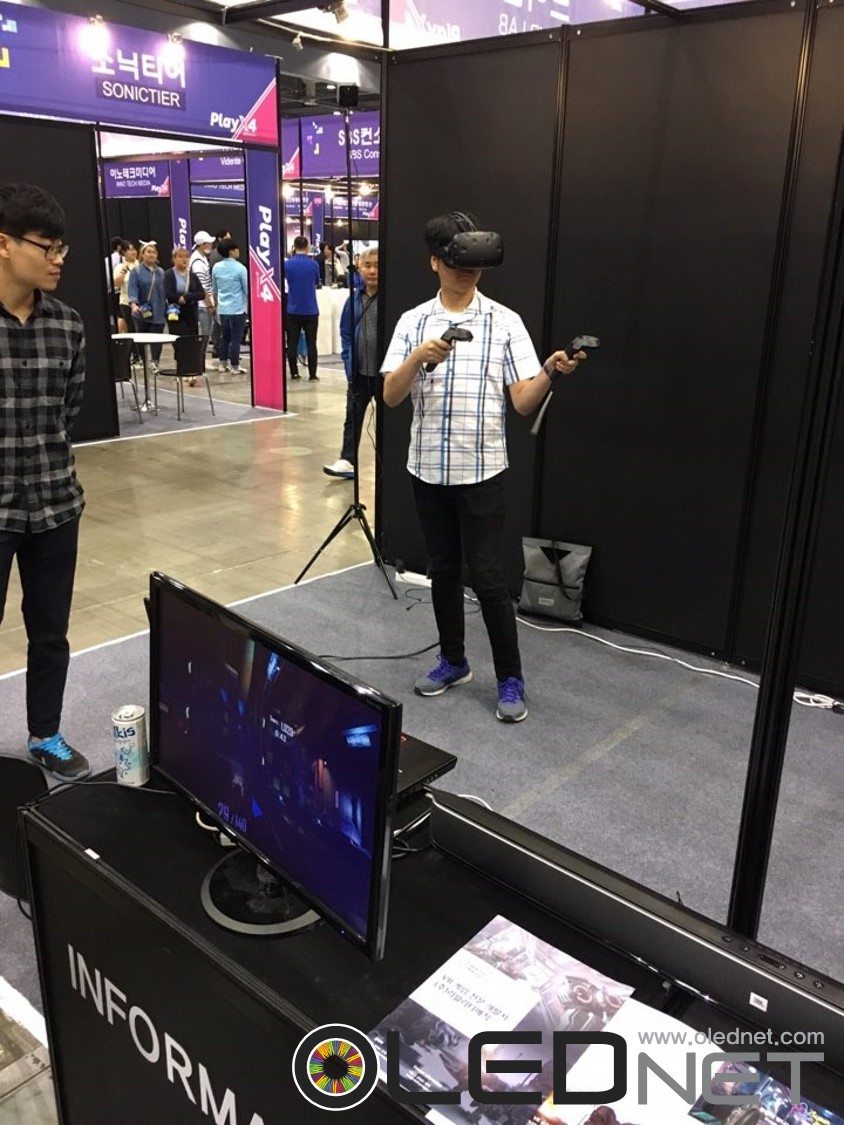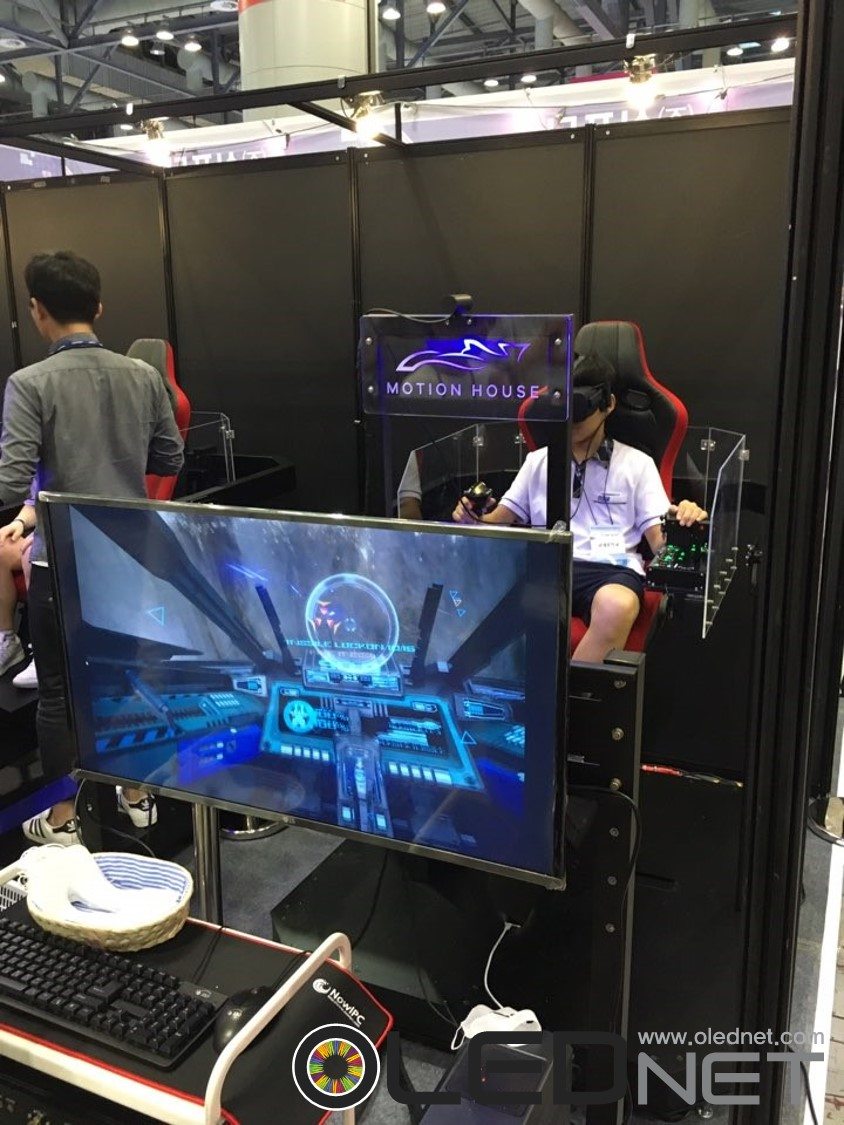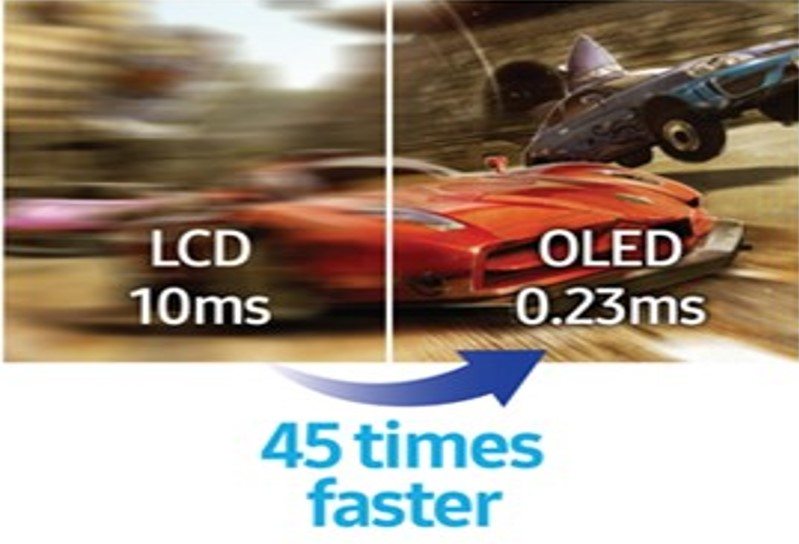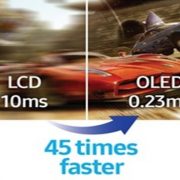OLED, the mainstream of HMD devices for VR
The ‘PlayX4’ opening ceremony, a next-generation augmented game show, was held at Kintex exhibition hall 2, Ilsan, Goyang, Gyeonggi-do on the 25th. During the event, a number of companies presented VR contents, using HMD (head mounted display) devices in application of OLED, such as Oculus Rift, HTC Vive and Gear VR to improve immersion and reduce motion sickness.
Realitymagiq, a professional of VR game developer, introduced a multiplay game. In reply to a question on immersion into VR, “Device performance is essential for immersive in VR, and to reduce latency, the major culprit for sickness, OLED is more than enough,” said Kim Sung-kyun, the CEO of Realitymagiq. “However, resolution needs to be further developed and so does GPU performance.”

Motionhouse Co., Ltd. has introduced MotionGear for users to experience tilting and engine vibration during actual driving. Oculus Rift OLED-applied headset, was used; “Oculus Rift was the one that could minimize the motion sickness most”, said a participant.

Latency refers to the time length for the CPU to receive information from the tracker and output, which is related to the response time of the display and the information processing of the graphics card. The response time of the display required in VR is known to be less than 3ms. Samsung Display compares the response time between OLED and LCD on the blog and emphasizes that OLED is the optimal display for VR HMD device.

The Response time between OLED and LCD, Source: blog.samsungdisplay.com
In fact, many VR content companies used OLED-applied HMD devices such as Oculus Rift, HTC Vive, and Gear VR, and users seemed to enjoy VR game, not suffering from dizziness
Recently, aside from Oculus Rift and HTC Vive, many HMD makers such as recently launched Sony’s PS VR and Royole’s Royole Moon are OLED-based, not LCD, and surely the OLED application is expected to expand further.



댓글을 남겨주세요
Want to join the discussion?Feel free to contribute!